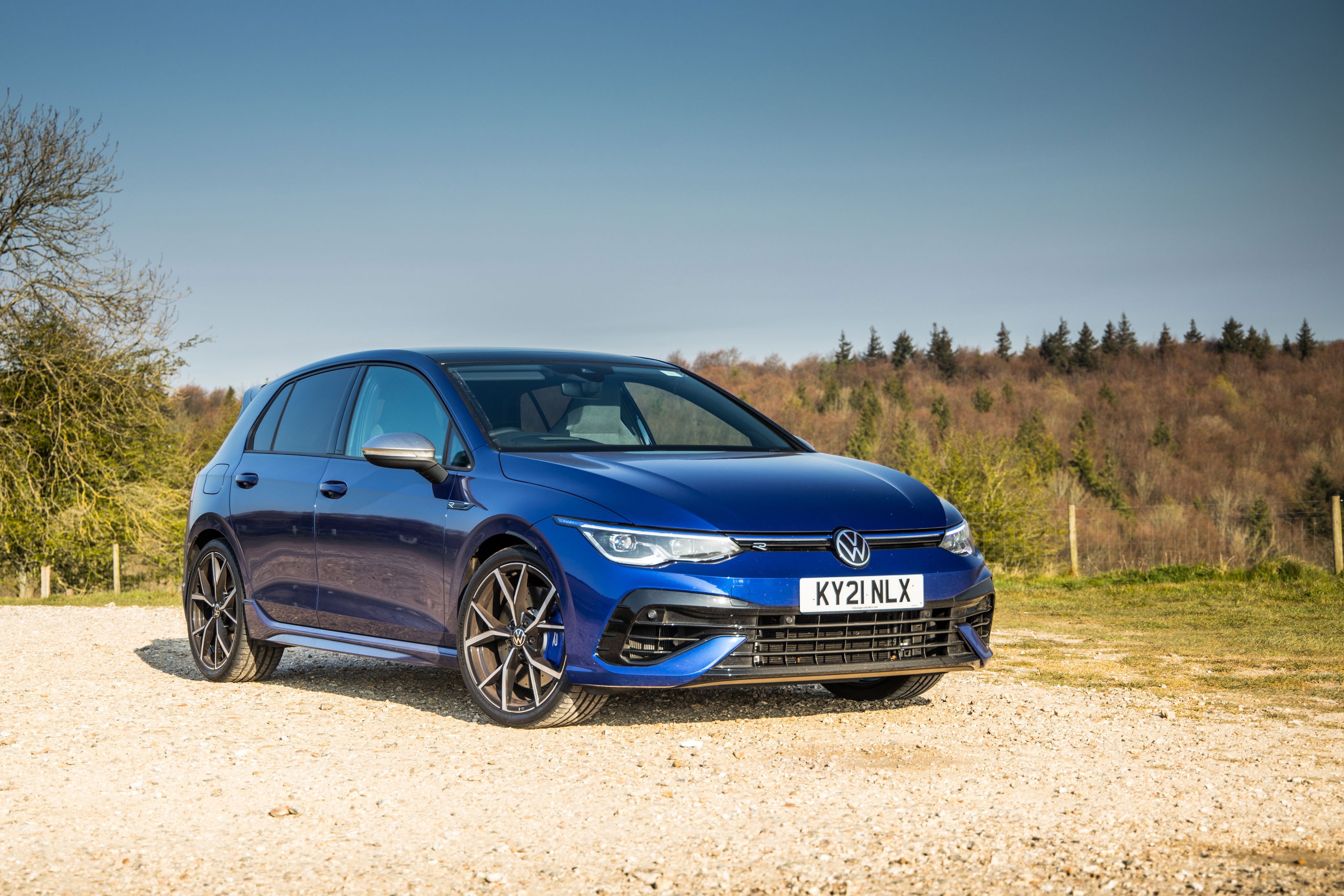The previous generation VW Golf R holds a special place in many hearts, and it’s easy to see why. It offered a potent combination of speed, all-weather capability, and understated styling, all at a surprisingly accessible price point, especially with early lease deals.
However, for drivers who prioritize the thrill of a winding road, the older Golf R sometimes felt lacking. Its ~300bhp output, while respectable, didn’t always translate into the engaging, slightly overpowered feel that many crave in a hot hatch. Some felt that power level was better suited to front-wheel-drive setups, where managing and exploiting the power becomes part of the fun.
The Audi S3, sharing similar underpinnings, has often been criticized for the same reason – being capable but somewhat uninspiring. But the 2021 Vw Golf R distinguishes itself from its Audi cousin with a significant upgrade: a new generation of the Haldex all-wheel-drive system.
Explore 2021 Golf R Pricing and Availability
This advanced system incorporates torque vectoring, capable of directing up to 100 percent of the available torque to a single rear wheel. Opting for the Performance Pack, a worthwhile £2000 investment on the test car, unlocks even more driver-focused features, including the now-essential “drift mode” for hot hatches. This package also adds attractive alloy wheels, a track-oriented Nurburgring driving profile, and a more prominent rear spoiler.
Even without engaging “Drift” mode, the 2021 Golf R’s driving dynamics are a world apart from its predecessor. The previous model’s predictable but somewhat sterile “grip-at-all-costs, leading to understeer” character is gone. The front end feels remarkably sharp, and depending on corner entry speed and throttle application, genuine power oversteer becomes a tangible possibility.
While the oversteer is typically subtle and quickly managed by the sophisticated all-wheel-drive system, eliminating the need for dramatic counter-steering, it signals a fundamental shift in the Golf R’s handling philosophy. Achieving more pronounced, sustained drifts would require deliberate provocation and ample space to maneuver.
This newfound playfulness on public roads transforms the driving experience. Crucially, when the rear end does step out slightly, it feels natural and progressive, unlike the sometimes artificial sensation experienced in cars like the Ford Focus RS or Mercedes-AMG A45.
The positive changes extend beyond handling. While the steering remains somewhat numb in terms of outright feedback, it’s commendably fast, predictable, and significantly better weighted than many other performance models within the VW Group. The adaptive dampers strike an excellent balance for real-world driving in all modes. For those seeking granular control, the touchscreen interface offers an impressive 15 levels of damping firmness. While such digital adjustability might seem overly complex, experimenting with settings above “comfort” reveals their effectiveness on varied road surfaces.
For spirited driving, “Race” mode is the optimal setting, ideally paired with “Sport” or fully deactivated ESP. This combination sharpens the engine response and further loosens the rear end, maximizing driving engagement. With stability control fully engaged, the fun is noticeably curtailed.
The heart of the 2021 Golf R is the refined EA888 ‘evo 4’ inline-four turbo engine, producing 316bhp and 310lb ft of torque. This translates to a 0-62mph sprint in a brisk 4.7 seconds. With the Performance Pack, the top speed is elevated from 155mph to 168mph. While subjectively “fast,” it might not feel overwhelmingly so in today’s performance landscape. The inclusion of a particulate filter noticeably mutes the exhaust note, potentially diminishing the perceived value of the optional £3100 Akrapovic titanium exhaust, although satisfying pops and crackles are still present.
The seven-speed DSG gearbox proves to be a well-suited partner for the engine, minimizing any longing for a manual transmission. Upshifts are executed swiftly, and downshifts are generally responsive to driver input. However, the gearbox’s insistence on upshifting at the rev limiter, even in manual mode, is a minor drawback.
The much-hyped “Drift” mode warrants further exploration. Initial impressions suggest it noticeably loosens the rear and sharpens throttle response, likely to facilitate weight transfer and initiate slides. The steering feel in this mode becomes somewhat unusual, suggesting a more in-depth evaluation is needed to fully understand its capabilities and effectiveness. For now, it remains somewhat of an intriguing novelty.
Fortunately, “Drift” mode is easily ignored if it doesn’t appeal. Less avoidable are the ergonomic and technological shortcomings inherited from the standard Golf 8. The Golf 7 excelled in user-friendliness, with intuitive controls, solid build quality, and user-friendly infotainment. The Golf 8, however, represents a step backward in these areas.
Physical climate controls have been replaced by touch-sensitive sliders and a reliance on the fiddly, slow infotainment screen for many functions. While temperature shortcuts are available, their placement on a flat, touch-sensitive bar beneath the screen requires taking eyes off the road. Despite efforts to declutter the dashboard, the vent placement feels oddly positioned. Furthermore, the overall interior ambiance doesn’t quite match the premium feel of the previous generation.
A particularly concerning issue is a cruise control software bug, similar to one experienced in the VW ID.3. This can lead to the car misinterpreting speed limit signs, for example, mistaking a 50mph sign for 50kmh and abruptly braking to 31mph. Other anomalies include incorrect speed limit displays and unnecessary braking in response to traffic in adjacent lanes.
While VW acknowledged this issue with the ID.3 and claimed a fix was in development, the recurrence in the Golf R raises concerns about quality control and software validation. These glitches, combined with the frustrating infotainment system, detract from the seamless ownership experience traditionally associated with the Golf brand, lending a sense of rushed development.
This is significant because the expectation has always been that a Golf seamlessly integrates into daily life. These usability issues make recommending the new Golf GTI over competitors slightly more challenging, as its driving experience isn’t drastically different from its predecessor.
However, the 2021 VW Golf R successfully distinguishes itself from the previous generation. It’s now a hot hatch genuinely geared towards drivers who value engaging handling and cornering prowess. Despite a slight power deficit compared to some rivals, it presents a compelling alternative to cars like the Mercedes-AMG A45. If you can overlook the frustrating infotainment system and software quirks, the 2021 VW Golf R offers a significantly more rewarding driving experience than ever before.
2021 VW Golf R Key Specs
Engine: EA888 inline-four turbo
Power: 316bhp
Torque: 310lb ft
0-62mph: 4.7 seconds
Top speed: 168mph
Price: £39,295 (plus £2000 Performance Package)

